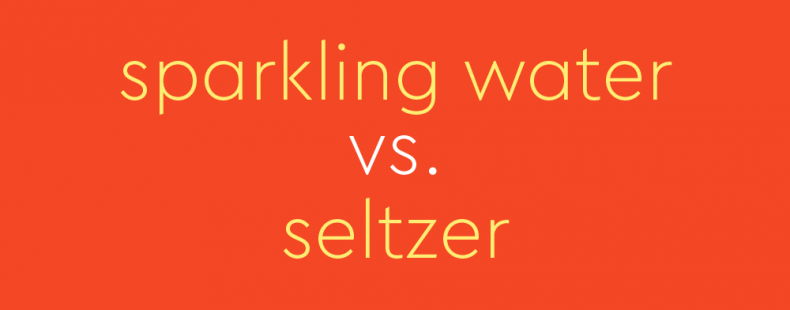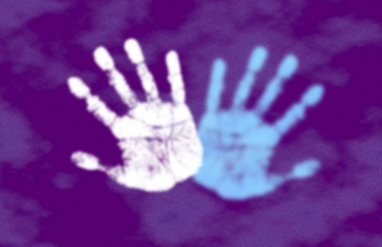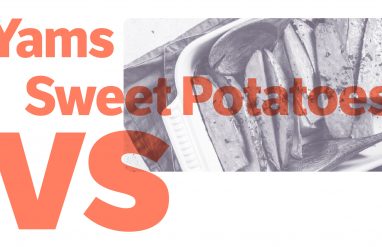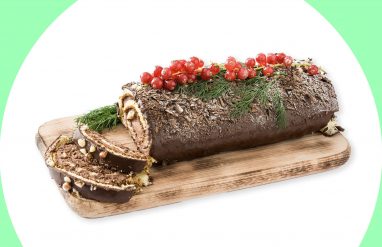Fizzy water—it’s just about everywhere. It’s poured in restaurants and carbonated at home. Cans fill fridges and a new alcoholic hard seltzer seems to bubble up every week.
Humans have cherished gassy water for centuries, though there have never been as many options as there are today.
Look a little closer, and you’ll find these effervescent waters fall into a few distinct categories: sparkling water, seltzer, club soda, and soda water. This isn’t a case of differing regional dialects à la pop versus soda versus cola—though the Food and Drug Administration does refer to all four types of fizzy water as soft drinks. Each type of bubbly has minute style differences and long histories that are need-to-know information for any connoisseur of quality carbonated H2O.
And it all starts with the name.
What is soda water?
Soda water is “an effervescent beverage consisting of water charged with carbon dioxide.” That charge causes carbonation, which is what happens when a liquid, in this case water, absorbs carbon dioxide gas.
First, a little history.
The scientist and Unitarian minister Joseph Priestley is credited with nailing down the basics of artificial carbonation. Priestley lived next to a brewery in the English town of Leeds in the late 1700s, and he was interested in creating an artificial bubbly water to match the carbonation in beer and naturally carbonated spring waters. His process, which he published in the paper “Directions for Impregnating water with Fixed Air,” was to make carbon dioxide by combining sulfuric acid (or oil of vitriol, as it was called at the time) and chalk. He captured the gas in a bladder and then forced it through pipes into a corked container of water.
The phrase soda water was first recorded as a description for Priestley’s artificially carbonated water in 1795–1805. The name was inspired by the chemist Richard Bewley, who added sodium carbonate, commonly called washing soda, to the process. This allowed for more carbon dioxide absorption and led to the bubbly water being called soda water after the sodium salts. Today, the Food and Drug Administration lists soda water as a “class of beverages made by absorbing carbon dioxide in potable water.”
Soda water has proven a highly adaptable phrase. Drop the water half of the term and you have soda, a commonly used word for flavored bubbly that are also called soft drinks and cola.
What is the “root” in root beer? Learn more about this popular drink here.
What is sparkling water?
At its most basic, sparkling water is simply another phrase for soda water. If you ask for sparkling water at a restaurant, there’s a good chance you’ll be presented with the same artificially carbonated options with a neutral taste as if you asked for seltzer, soda water, or even fizzy water.
There is a difference when it comes to sparkling mineral water, however. Mineral water has naturally dissolved mineral salts or gases (or both), and comes from a spring or water source. Depending on the source, sparkling mineral waters contain a varying level of natural carbonation along with minerals like sodium, magnesium, and calcium. In the United States, mineral water can be sparkling or still—though tacking sparkling in front of mineral water or asking for brand name sparkling mineral waters like Perrier or San Pellegrino will ensure you get the bubbles you’re looking for.
What is seltzer?
Seltzer stands out among the list of effervescent waters. It has no added minerals, first of all. It’s also one of the earliest terms—seltzer was first recorded about 1735–1745—and was originally tied to the place where the water came from.
In the earliest sense of the word, seltzer is a sparkling mineral water that often has small amounts of salt, sodium, calcium, and magnesium carbonates. It gets its name from the German Selterser wasser, which means water from natural mineral springs near the village of Selters.
Seltzer became more of a generic term for fizzy water as its popularity spread around Europe and North America. Soda siphons (bubbly water dispensers that kept water from going flat) were created in the 1800s and were often called seltzer bottles regardless of whether the liquid inside came from the Selters region or elsewhere.
Today, the word seltzer is no longer a destination-focused, name-brand designation. Instead of waters from Germany, another modern definition for seltzer is “tap water that has been commercially filtered, carbonated, and bottled with no addition of minerals or mineral salts.”
An example of just how far the word has come is hard seltzer. Essentially just sparkling water with alcohol and, in some cases, added flavors, hard seltzer has no relation to natural springs in Germany. Just like seltzer before it, the drink’s popularity has made hard seltzer a general catch-all phrase for seltzer water with alcohol in it. The adjective hard here specifically denotes the beverage contains alcohol (“containing more than 22.5 percent alcohol by volume” or “strong because of fermentation; intoxicating”).
What is club soda?
Club soda, like sparkling water, shares a definition with soda water. The name refers to water that’s been carbonated with carbon dioxide and has added minerals like potassium sulfate, salt, and sodium bicarbonate. The trace amounts of minerals impact the flavor (though aren’t generally in high enough amounts to have health benefits), and each brand has its own proportions.
The soda half of the name refers to the minerals just as it does in soda water. But what about the club in club soda?
The addition of club to the first half of club soda comes from social clubs. The Irish company Cantrell and Cochranes Super Carbonated Club Soda trademarked club soda in 1877 in reference to the sparkling drinks served in clubs at the time. In the long run, the name stuck for the product more than its association with social clubs. Today, club soda is just as acceptable a term to describe soda water outside of social clubs as it is inside of social clubs.
Which should you use—and drink?!
Anyone who likes to feel the pop of bubbles on their tongue while getting hydrated knows that all fizz is not made equal. That much is clear from the definitions alone. Knowing what each specific term means today is the best way to find your favorite.
So the next time you’re looking for a naturally effervescent water, be sure to ask for sparkling mineral water. If fizz is all you want and you don’t much care how it got there, the generic soda water or club soda will do—just know that each brand will taste slightly different due to custom levels of added minerals. Finally, if you’re on the hunt for carbonation and no added minerals, seltzer is what you need, while a hard seltzer is reserved for when you want your alcoholic beverage to taste like seltzer but have a little kick. If you’re looking for a flavored drink, you can ask for any of these–except club soda, which is unflavored.
Regardless of what you call it, all of these terms have one thing in common: they’re all waters that release bubbles in the form of carbon dioxide.














